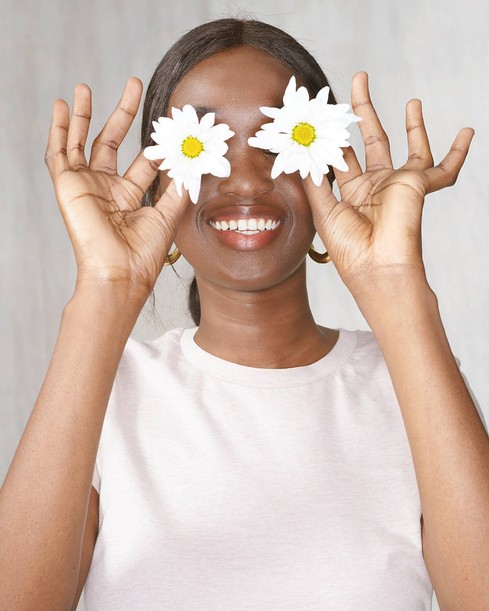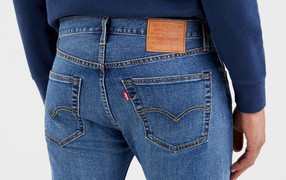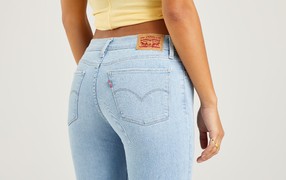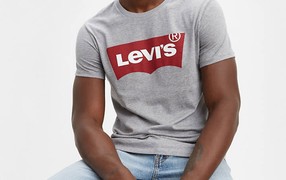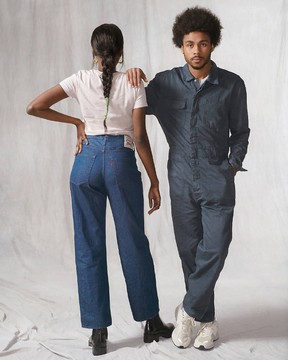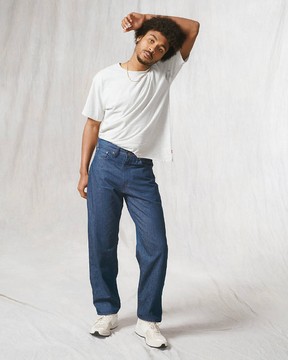Breadcrumbs navigation
OUR MOST SUSTAINABLY DESIGNED COLLECTION

The textile industry is responsible for 1.2 billion tons of greenhouse gas emissions— that’s more than all international flights and maritime shipping—combined! What’s worse, 3 out of every 5 garments produced ends up in a landfill or incinerated each year, with some 40% of clothing purchased in certain countries going unworn. It’s time we reverse these statistics. With the global climate crisis intensifying every year, we refuse to idly accept our industry’s environmental impact and disposable tendencies as an inevitable reality.
In order to reduce our environmental footprint, we’re constantly researching radical new ways to make the clothes you love while leaving less harm in our wake. As our most sustainably designed collection—and the R&D lab where our innovations are invented, experimented on and honed before being implemented on a larger scale across our brand—WellThread® is at the forefront of these efforts.
We don’t just look at the natural resources that go into the clothing, we take a holistic approach, considering the environment in all stages of our production process.
“WellThread® is where we engage in research through practice.”
– Paul Dillinger, Vice President, Head of Global Product Innovation

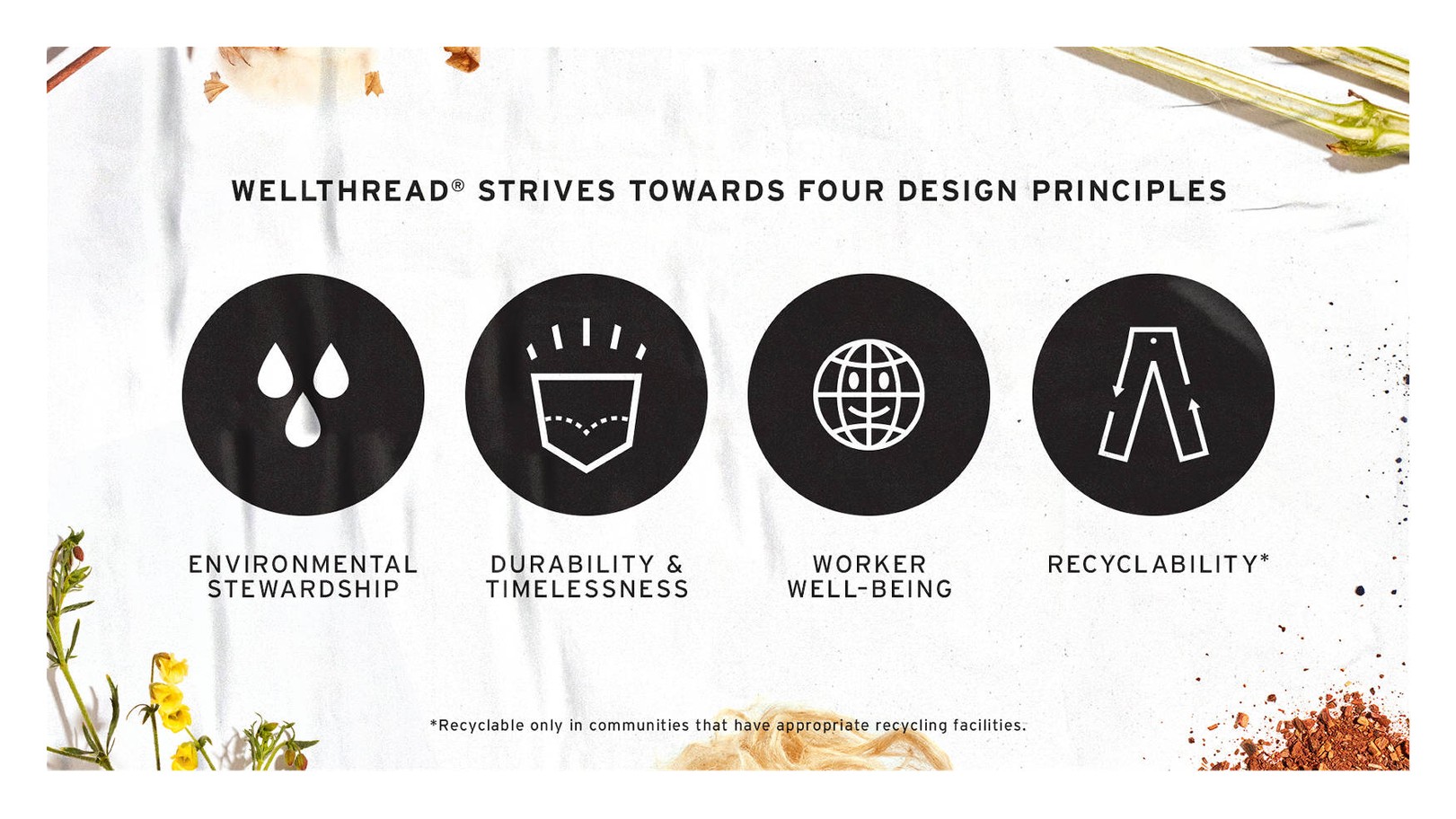
ENVIRONMENTAL STEWARDSHIP
In order to reduce our ecological footprint, we start by sourcing and creating with materials that use less water and chemicals.
WORKER WELL-BEING
The people who best know what workers need are the workers themselves. That’s why our Worker Well-being program takes a unique approach to addressing their necessities. First, our suppliers survey factory employees to hear firsthand what they require to be more engaged, productive and healthy. Once identified, we partner with local and national non-profits and NGOs to implement programs to better serve the workers.
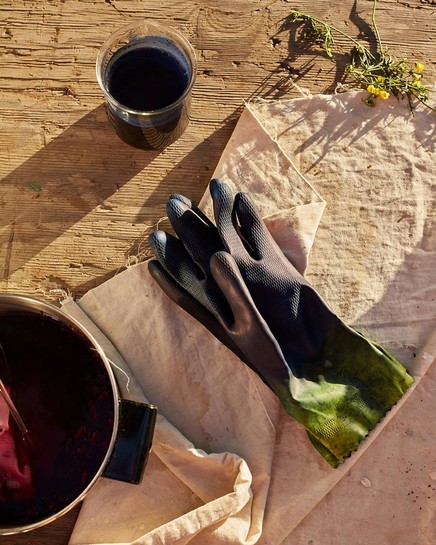
DURABILITY & TIMELESSNESS
To dismantle the mindset of disposability the apparel industry’s adopted, we put extensive consideration into which styles to create for our WellThread® collection. If it’s in the line, it’s because we have faith that it will stand the test of time—both in terms of style and durability. Think classic tees, essential Trucker Jackets (complete with removable linings for year-round wear!) and of course, sturdy jeans.
RECYCLABILITY
Reduce. Reuse. Recycle. We all know the phrase, but it’s a lot harder said than done. In fact, currently, less than 1% of clothing is recycled. To address this, we’ve spent the last few years exploring circular design and recalibrating our WellThread® garments to be recycled and transformed through material recovery.
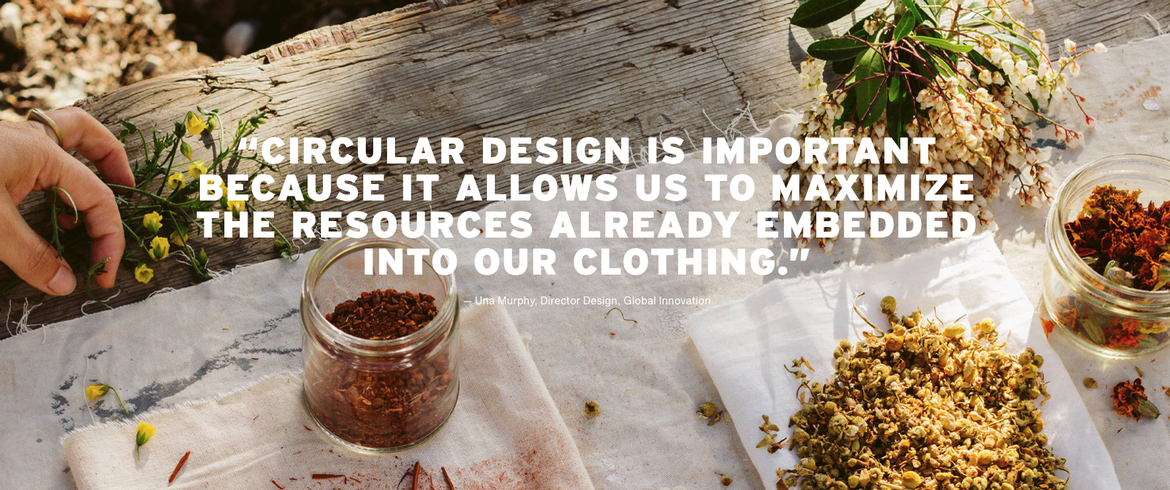
Each and every component of a WellThread® garment’s anatomy—from the fabric to the iconic Levi’s® Two Horse patch to the zipper—can be recycled. By designing for recyclability with mono-material styles, we keep garments out of landfill and give them a second, or even third, life. That way, when the day comes and they’re no longer wearable, they can be created into something entirely new.
HAPPY DYES
ULTRASONIC DYE
This season, we’re experimenting with ultrasonic dye application. No, it doesn’t mean we’re singing color onto the fabrics. It means that rather than using chemicals found in most traditional dye processes, we use a sonic frequency to induce the pigment molecule to adhere to the fiber, thus replacing a chemical process with a physical application. And if that weren’t enough, this process uses a lot less water than traditional dye methods. Sounds pretty cool, right?
PLANT-BASED DYES
The world around us is filled with color. By drawing from natural sources of pigment, we reduce our reliance on pollutive synthetic chemistry and save water. This season, you’ll find a range of fantastical-sounding natural dyes throughout the collection. For example, the denim pieces derive their signature striking hue from a natural plant-based indigo. And our non-denim styles are garment dyed with bio-based synthetic plant waste dye. In other words, we’re harnessing the pigment found in discarded flora, like almond shells and even medicinal plants. Then, we utilize a non-toxic, glucose-reducing agent and apply the pigment using our Water<Less® techniques.
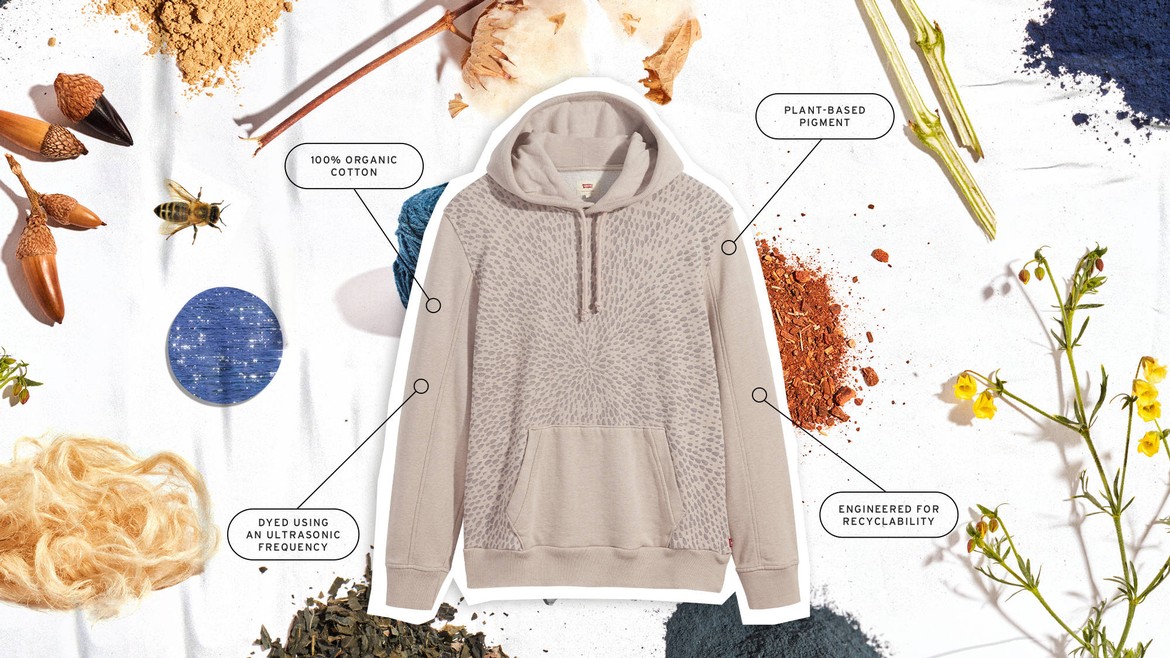
THE GOOD STUFF
As cotton is the foundation of almost all of our products, it’s imperative that we explore better ways to engage with the communities that grow this crop. To this end, we only use more responsibly grown cotton throughout our line.
ORGANIC COTTON
You might be wondering, “If I’m not consuming cotton, why should I buy organic?” While traditional cotton won’t cause damage to you, the wearer, the chemicals conventionally used in its cultivation systems can be impactful to the farmers who tend to the crops, the native fauna and the surrounding environment. Organic cotton doesn’t use these pesticides, herbicides and fertilizers. So think about it as making good for our planet and the beings who share it.
